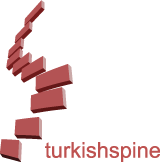ABSTRACT
Objective:
To determine the age, gender, reason of injury, neurological status, level of fracture, type of fracture of the cases that are hospitalized in our clinic due to spinal trauma and that are practiced medical or surgical treatment in a retrospective way and to compare the results with the literature and to discuss them.
Material and Method:
This research has been conducted in between January 2004 – December 2011 by evaluating 234 patients who were exposed to spinal trauma. They were exposed to cervical, thoracic and lumbar area. Trauma has been included to this research. A classification for each patient has been made separately according to the results of X-ray, computerized tomography and magnetic resonance imaging of patients, performed just after the patients consulted to the hospital. The patients have been classified in 5 groups according to upper cervical, lower cervical, thoracic, thoracolumbar and lumbar area traumas and each group has been evaluated in itself.
Conclusion:
In our research, the most frequent reason of spinal traumas has been determined to be motor vehicle accidents and the most affected area has been determined to be thoracolumbar area (T11-L1). Using a general classification system has turned to be compulsory in determining the treatment that is to be applied to the patient.



